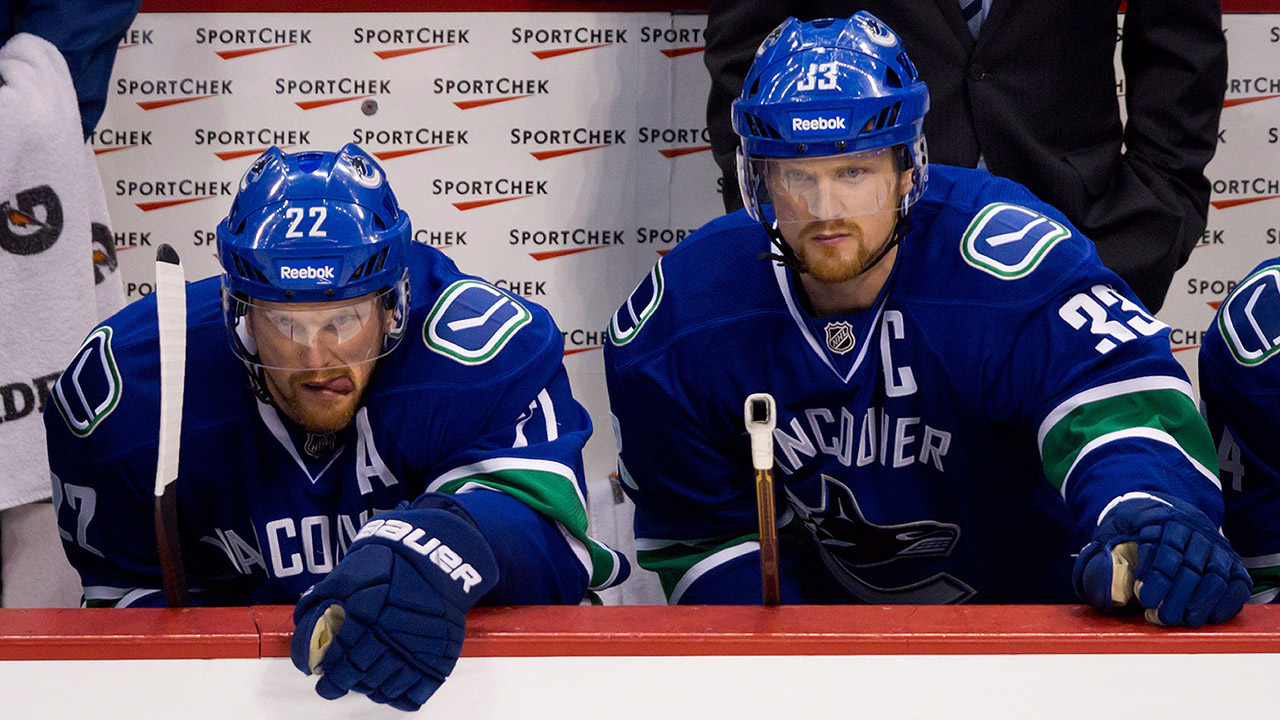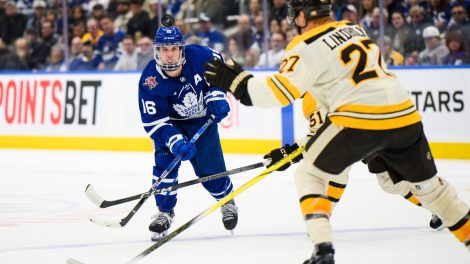It’s fitting that the Vancouver Canucks, who struggled so mightily in April to transition the puck in a first-round playoff series loss to the Calgary Flames, have appeared to struggle in making the larger transition from a contending team to a rebuilding one.
Jim Benning’s Canucks rebuild isn’t a traditional one. There is no talk of tanking on Griffiths Way. There are only discussions of how winning is a crucial part of the player development process.
“We want to be competitive,” Benning told the media Wednesday afternoon. “We want to develop our kids in a winning environment, so we want to be competitive for a playoff spot.”
Make no mistake though: despite the Canucks’ short-term playoff aspirations, this is a club that is looking to the future and playing a longer game.
It has been an occasionally painful, and messy process.
For Canucks fans it’s been frustrating to observe, particularly as the rest of the Pacific Division has actively improved, and improved enormously. The Los Angeles Kings have loaded up for one more run, and the Calgary Flames and the Edmonton Oilers have positioned themselves to be juggernauts for years to come.
Meanwhile the Canucks spent the past few weeks housekeeping.
“To make big moves you need cap space and you need good young prospects in your system,” explained Benning, summarizing his team’s moves during a busy week.
This wasn’t Vancouver’s year to make those moves, to hear Benning tell it. They didn’t have cap space, and they don’t have the depth in their system.
“We’re just starting that process, I would say,” Benning continued. “We’ve had now three good drafts and we don’t want to move any of our good young prospects. We’re just starting to build up depth in our system.”
Like at the 2015 NHL trade deadline, this isn’t a team that’s carrying itself like a contender. It’s partly because they recognize that they’re not at that stage yet.
During the past seven days the Canucks dealt Kevin Bieksa, a well liked, but aging veteran who was penciled onto their third defense pair; they dealt a backup goaltender with the potential to be a decent starter in fan favourite Eddie Lack and they traded an underachieving young forward in Zack Kassian.
In completing these deals the Canucks shed enough cap space to retain key power-play contributor Yannick Weber and to sign a 27-year-old puck mover in Matt Bartkowski to affordable one-year contracts.
They willing parted with a fifth-round pick in order to rid themselves of Kassian and received in exchange a useful contributing pugilist in Brandon Prust. Bieksa netted the club a second-round pick from the Anaheim Ducks, and Lack brought back a third-round selection, which the club used to select Guillame Briseboise.
Looked at individually, some of those deals netted Vancouver poor value.
Lack generated less of a return on the trade market than any of the other goaltenders dealt over the past 10 days, and he has a legitimate shot at outperforming all of them next season.
The way Bieksa’s situation played out was modestly embarrassing for all parties involved.
Kassian is still a work in progress, but if he can figure it out, that trade could be a steal for the Montreal Canadiens, something Benning admitted willingly on Wednesday.
“With a young player, they have a window of opportunity to prove what they can be in the league and for whatever reason we couldn’t find it with Zack on a consistent basis,” Benning said. “That’s not to say that with a fresh start on a new team that he can’t be the player that he thinks he can be…”
As a whole however, Vancouver managed to upgrade the speed and depth of their back-end, they added some decent draft picks, and they carved out salary cap space for next summer and beyond. If the moves were underwhelming individually, on the whole, you can see why the Canucks feel that their gradualist approach to rebuilding took a step forward.
Small as that step may be.
“We’re in a transition period where we’ve got some good young players now in our system,” explained Benning. “When these guys are ready to play we want the room for them to step in and play. With cap room next year we can be more active in the high-end unrestricted market.”
Finding room for young players, in part, explains why the club allowed Shawn Matthias and Brad Richardson to walk in free agency. It also explains why they deemed Kassian an expendable asset.
“Basically we traded a right winger for a left winger, so now, with (Jake Virtanen) included in that group, we have five right wingers,” Benning said, explaining that he wanted any young players who earned a spot at training camp to have that opportunity.
“Brad was a real good player for us last year, but we didn’t want to get locked in long term, on a player like that, because we want to make sure when our young kids are ready to come up and play that there’s an opportunity for them,” Benning added on the subject of Richardson, referring to the potential he sees in prospects Jared McCann and Cole Cassels.
The risk that the Canucks are taking, of course, is that they’ll get stuck on the fringes of the playoff picture and prolong a potential period of mediocrity. As teams like the Buffalo Sabres and the Flames have recently demonstrated, you can rebuild quite rapidly if you’re bad enough for a year or two.
That’s easy for analysts and fans to say though, and tougher for a business to execute. There is a high cost to rebuilding in a market place that certainly doesn’t compare to Edmonton or Toronto when it comes to fan loyalty.
So this is what rebuilding looks like in Vancouver: a gradual, messy, competitive process. Is it a misguided process too? Time will tell.










